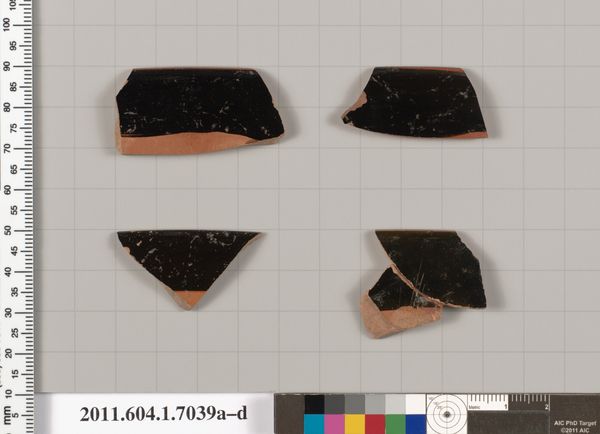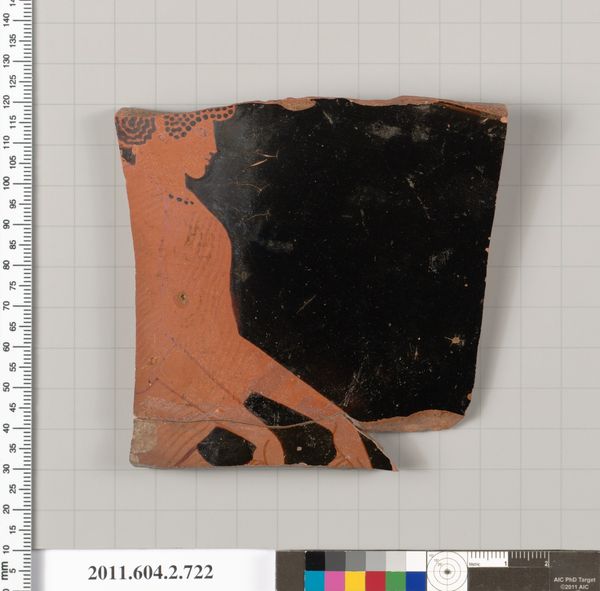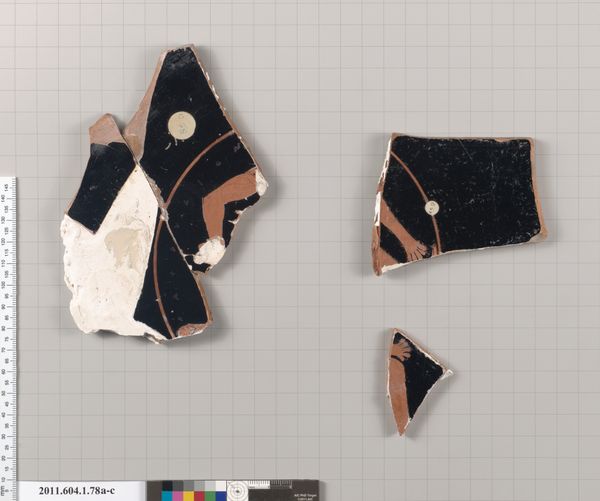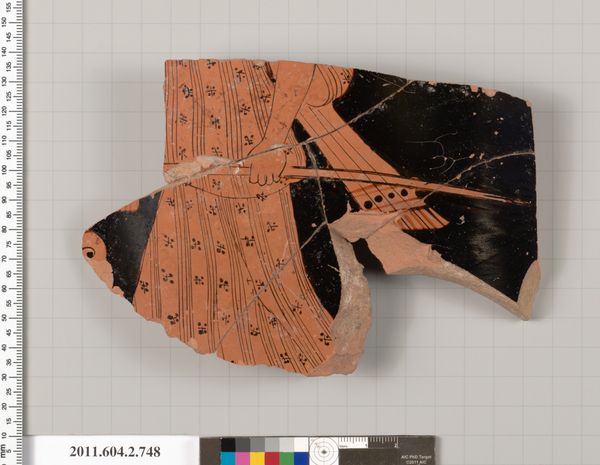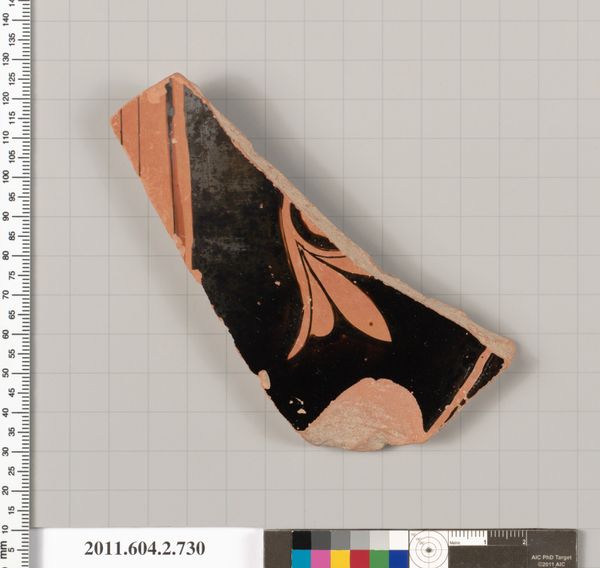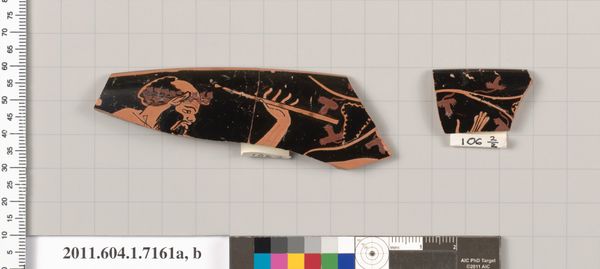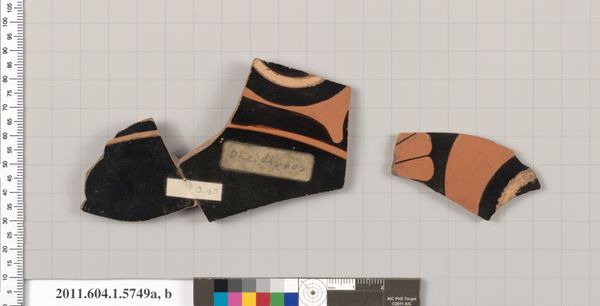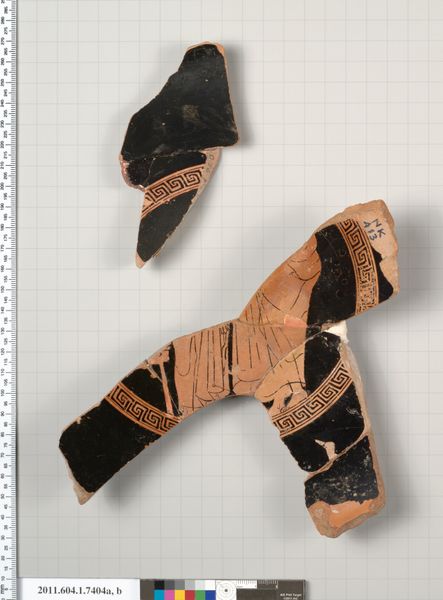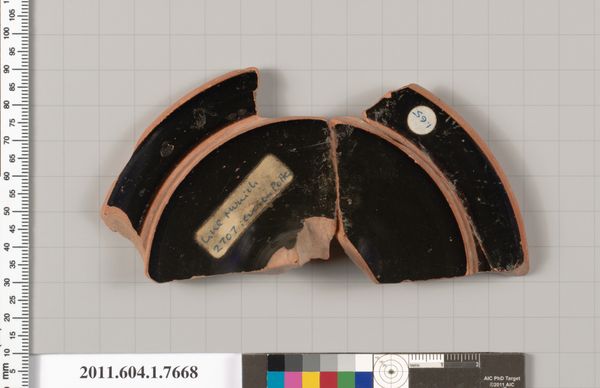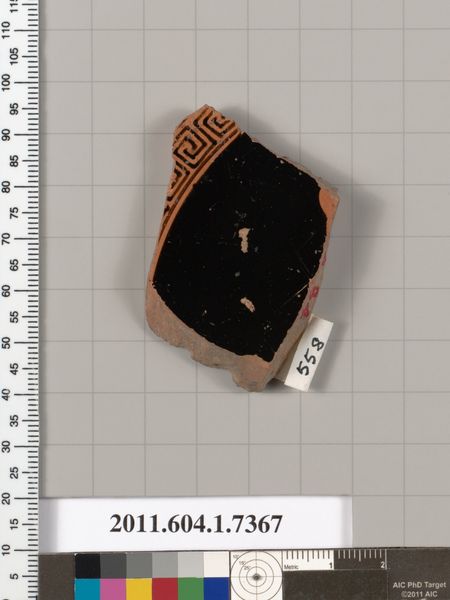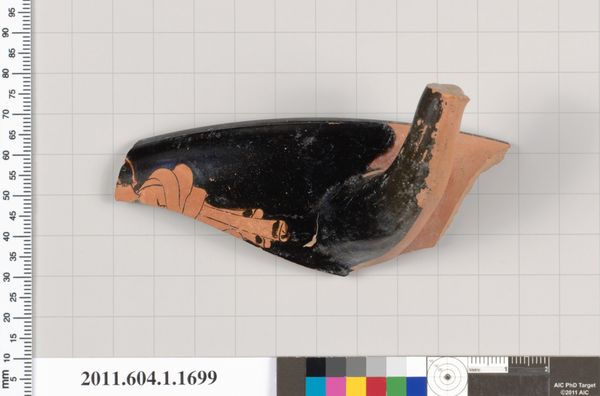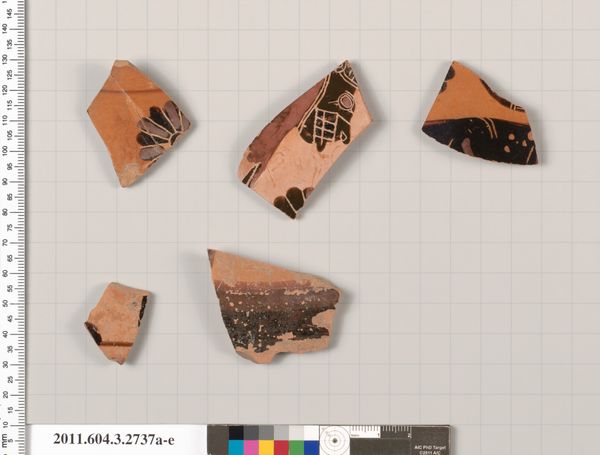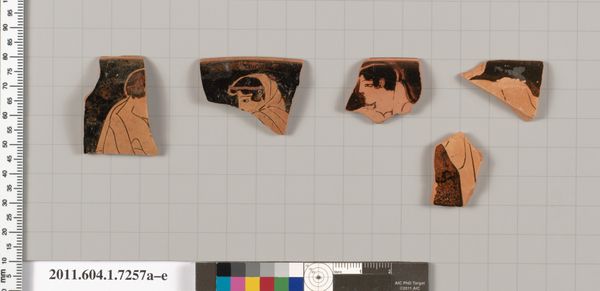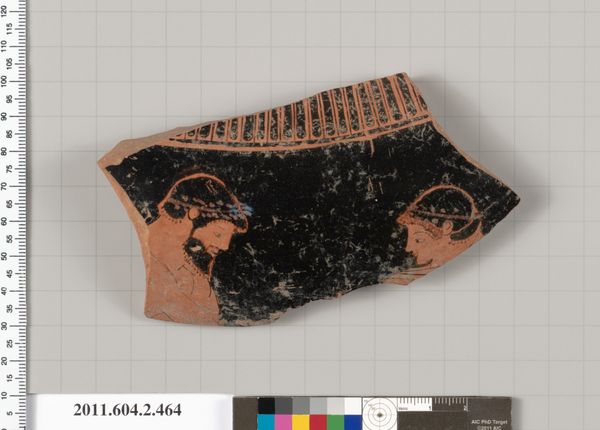
Terracotta fragments of a kylix (drinking cup) 530 BC
0:00
0:00
ceramic, terracotta
#
greek-and-roman-art
#
ceramic
#
figuration
#
ancient-mediterranean
#
terracotta
Copyright: Public Domain
Curator: What a poignant reminder of time's passage. We're looking at terracotta fragments of a kylix, an ancient Greek drinking cup, dating back to around 530 BC. It resides here at the Metropolitan Museum of Art. Editor: My immediate reaction is one of starkness. The deep, glossy black against the reddish terracotta shards...it's visually arresting, even in its fragmented state. It evokes a sense of loss, perhaps? Curator: It does, but it also speaks to resilience. Though broken, these remnants offer insights into ancient Athenian society and ceramic artistry. Consider that the kylix was integral to symposia, gatherings for intellectual discussion and revelry. These fragments, then, hint at a world of philosophical debates and social rituals. Editor: The kylix’s association with symposia is crucial. We often forget that such seemingly commonplace objects were laden with cultural meaning. This glossy black glaze – what would it have signified to its user? Is there a symbolic dimension to the deep hue itself? Curator: The black-figure technique was prominent at the time, largely because of its use to emphasize silhouetted figures against the red clay, thereby establishing scenes drawn from mythology and daily life. These images provided shared cultural narratives among Athenian citizens and created a context for ritualized engagement with heroic figures and the gods. Sadly, the existing fragments make such an identification difficult. Editor: But even without the narrative details, the color itself carries weight. Black has often been associated with the underworld, or with transitions. Could drinking from a vessel so darkly decorated be a symbolic act – a subtle reminder of mortality even in moments of celebration? Curator: A potent suggestion! Regardless of our readings of the symbology, remember that pottery such as this was central to Athens' economic and political power. The standardization of pottery manufacture demonstrates increased commercial capacity that created far reaching trade relationships throughout the Mediterranean. Editor: Seeing these fragmented shards really underscores how objects can hold more cultural meaning than their material presence suggests. They almost whisper to us, from across millennia. Curator: Precisely. They serve as vital touchstones, illuminating aspects of daily existence, artistry, and socio-political norms from centuries ago. It makes one contemplate how modern items will be received in distant future.
Comments
No comments
Be the first to comment and join the conversation on the ultimate creative platform.
